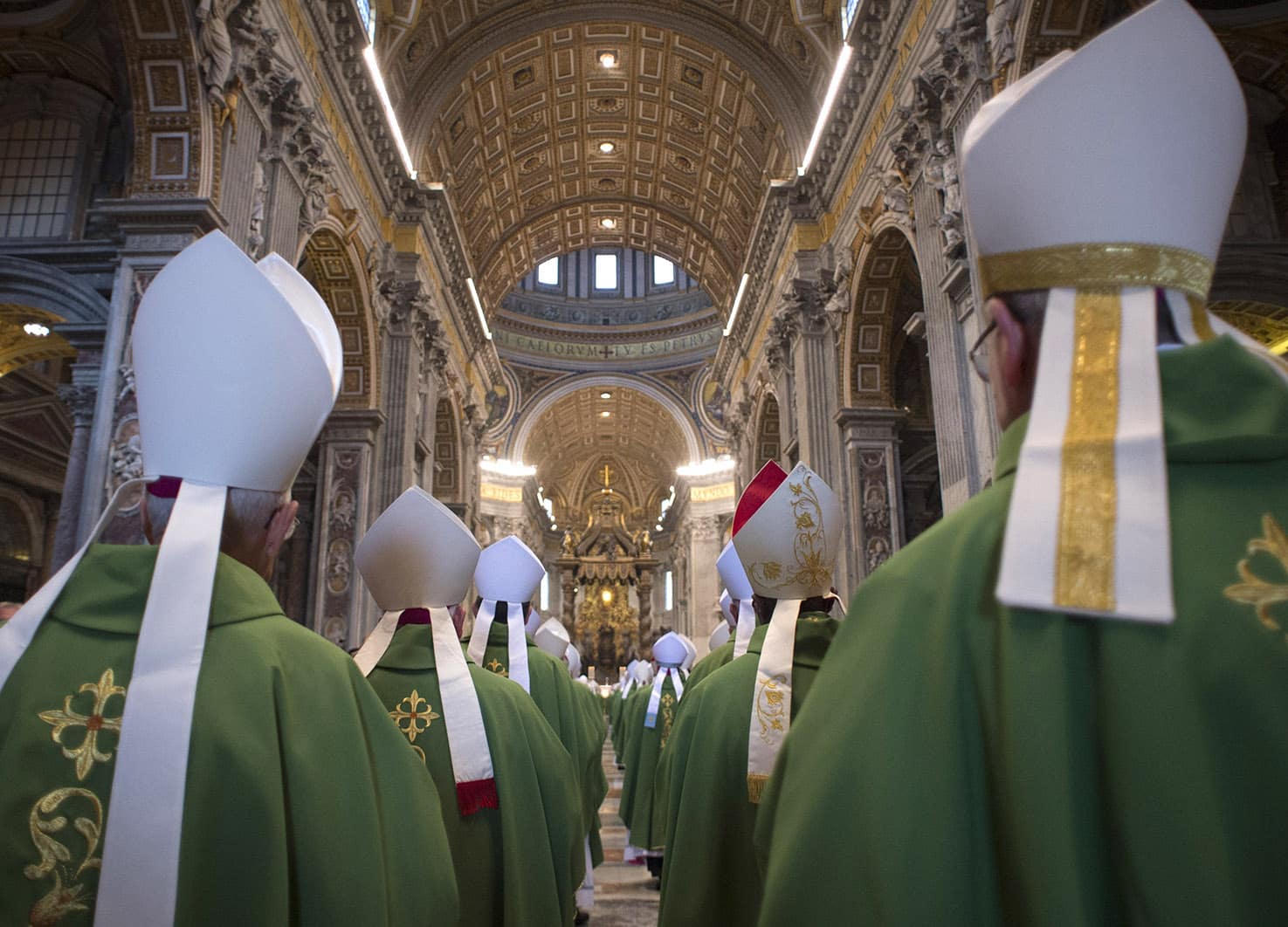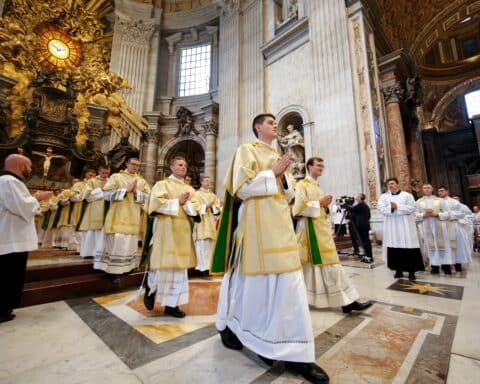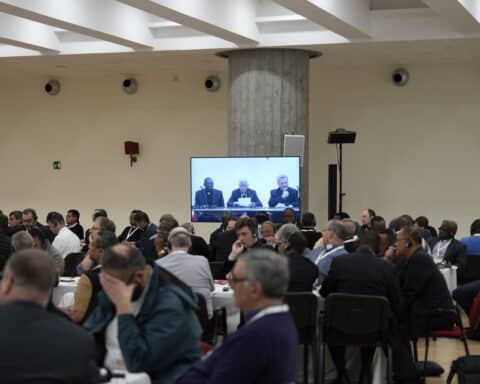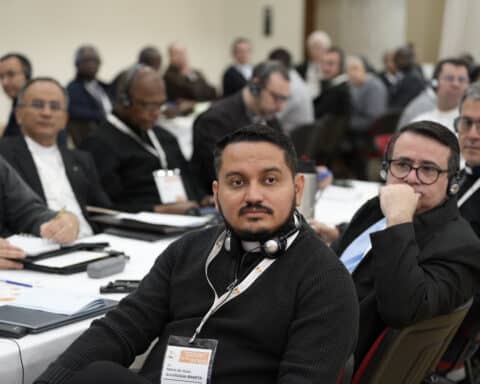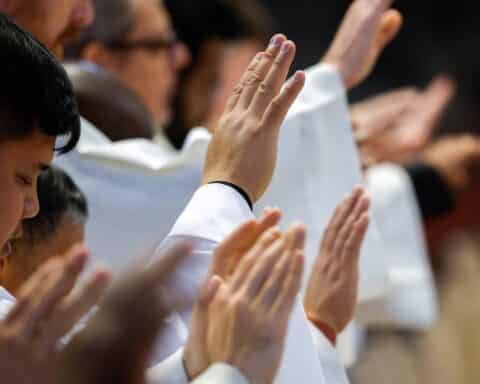Just over the horizon, one of the most important events to take place in the Church since the Second Vatican Council will convene in Rome on Oct. 4 and conclude on Oct. 28. I am speaking of the much discussed Synod on Synodality, which appears to be the capstone event in the pontificate of Pope Francis.
Pope Francis has acknowledged that for most average Catholics, the upcoming synod probably does not mean very much to them on a day-to-day, practical level. He says, “I am well aware that speaking of a ‘Synod on Synodality’ may seem something abstruse, self-referential, excessively technical, and of little interest to the general public.” Nevertheless, he reiterated his conviction that the synod is “something truly important for the Church.” I agree with that assessment. There is much at stake in the synod which I hope to outline briefly in what follows.
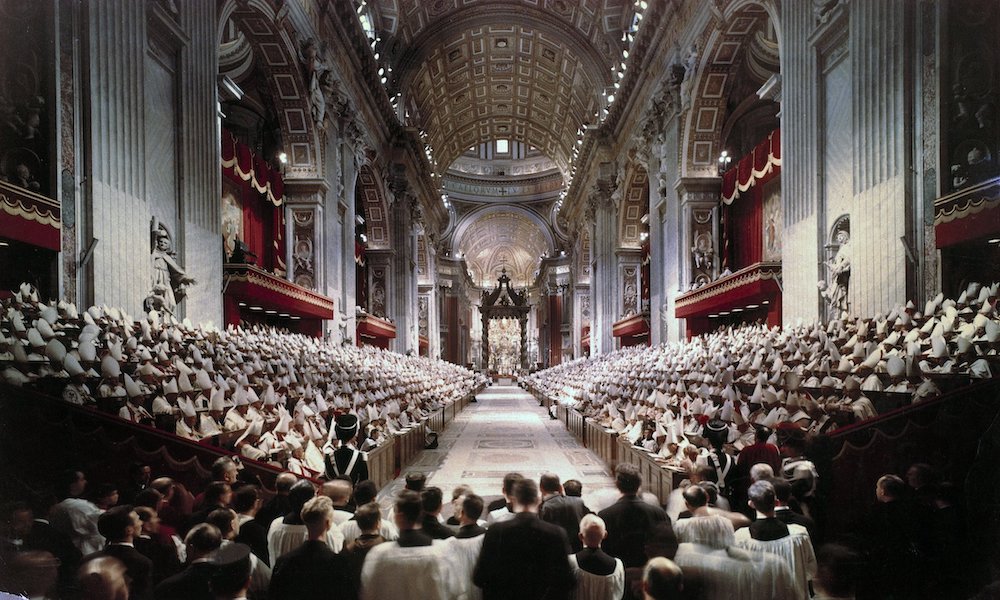
The synodal process
In some ways the synodal process has already begun with various “listening sessions” held on the local parish and diocesan levels, where average Catholics were asked to contribute their thoughts on what their primary concerns and experiences are within the Church. These responses were then collated by the various national episcopal conferences, which culminated in what the organizers of the synod call the “continental phase” of the synodal way. These collated responses were then forwarded to the Vatican and are to be the foundation for all of the discussions going forward.
The next phase of the synodal process is the gathering in Rome of various bishops, priests, women religious and some hand-selected lay people to discuss the various responses and to reflect on them openly and without, we are told, a pre-set script or agenda. The entire process will then conclude in 2024 with a final meeting in Rome, which will produce a final document that will, most likely, make recommendations to the pope for how to move forward. Pope Francis will then issue an apostolic exhortation which will be the final magisterial word on what all of this meant.
Debate over papal authority
But in order to truly understand what is at stake here, we need to take a step back and engage in some historical excavations in order to place the current synod in its broader historical and theological context. For starters, and at a most basic level, what is a synod anyway? The word itself is of ancient Greek origin and literally means a kind of “walking together” toward a common goal. But in the early Church, it came to connote, simply, an assembly or meeting of bishops, and sometimes clergy and laity, to discuss matters of importance in the Church. The word “synod,” therefore, means something similar to the Latin word for a “council” of some importance. There have been many such synods and councils in the history of the Church, many of them local meetings of regional bishops, with the greatest being the grand ecumenical councils that were meetings of all of the bishops of the universal Church.
The word (synod) itself is of ancient Greek origin and literally means a kind of “walking together” toward a common goal. But in the early Church, it came to connote, simply, an assembly or meeting of bishops, and sometimes clergy and laity, to discuss matters of importance in the Church.
However, over time the importance of the papacy as the central magisterial and governing ministry in the Church grew to such an extent that the authority of bishops came to be seen as mere extensions of papal authority. In common parlance one could say that the bishops became mere “branch managers” of “Church Inc.,” with the pope as an all-powerful CEO. From time to time this created a backlash within the Church, with some claiming that an ecumenical council was superior in authority to the pope, and even some national groups (such as the French) claiming the right to appoint their own bishops and to govern themselves without excessive papal interference. These two movements came to be known as “conciliarism” and “Gallicanism,” respectively, with a lot of political machinations involved as well, which created a lot of heat and division within the Church. And of course, the Eastern Orthodox churches walked away from papal authority in its entirety, leading to the great schism between the two apostolic branches of Christianity, which persists to this day.
This debate over papal authority was made worse by many other social factors, such as the Protestant Reformation, the rise of anti-clerical and secular forms of government that rejected Church interference, the rise of modern science, and a general loss of prestige for the Church in broad cultural ways. In short, the Church, and the papacy in particular, felt besieged by a rising tide of secularism, atheism, rationalism and a general sense of religious relativism and indifferentism. And all of these factors influenced people within the Church as well, which led to powerful centrifugal effects that threatened to tear the Church apart and to fragment it in ways not too dissimilar from the Protestant fractiousness. Therefore, it is understandable that the Church sought a solid and very powerful central authority to hold the entire edifice together, and it had such a center in the pope.
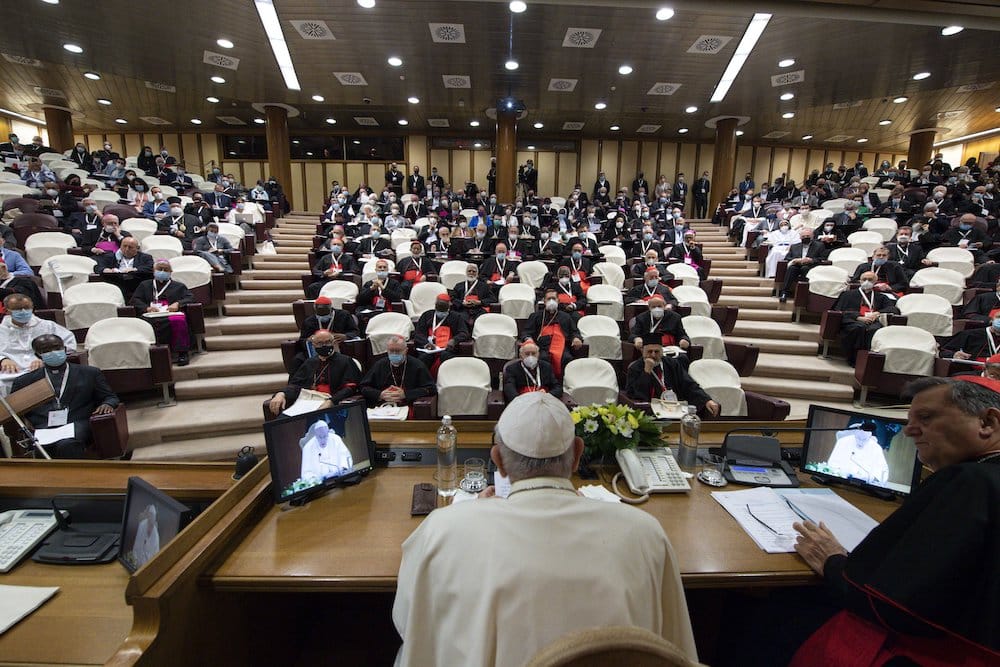
Papal infallibility
These various factors led, art least in part, to the dogmatic definitions of the First Vatican Council, held in Rome in 1869-70, where the dogma of “papal infallibility” and the pope’s universal jurisdictional authority were promulgated after much debate. The notion was “in the air” that in the midst of all of this modern confusion, the papacy needed to be the “Petrine rock of truth” and a fortress against error in the modern world. And all of this happened against the backdrop of the rise of Italian nationalism and the loss of the papal states, with the net effect of the pope becoming more of a spiritual rather than a political authority.
Unfortunately, the council, for reasons of social and political instability in Italy, came to an abrupt end without a formal closing, leaving the entire question of just how far the pope’s authority can be counterbalanced by the authority of the bishops hanging unresolved. This paved the way for the growth of papal authority and governance in the 20th century, which was increased exponentially as the new technologies of mass media increased papal visibility and influence.
I want to be clear about something. I am not saying that this is a bad thing or that the pope should not have great authority in the Church. I am an orthodox Catholic, and I affirm all that the Church teaches about the papacy. Nevertheless, even many orthodox theologians, Joseph Ratzinger (Pope Benedict XVI) included, have pointed out that this growth in papal power comes with certain risks, chief among them the diminishment of the authority of the bishops.
Fortunately, over the course of the 20th century the Church was blessed with many truly great popes, many of them now sainted (Pius X, John XXIII, Paul VI and John Paul II), who took on the task of issuing magisterial documents, such as encyclicals, which were meant to clarify Catholic truth in an ocean of modern, secular unbelief. The theology and philosophy of St. Thomas Aquinas was the guiding star of many of these documents, which was indeed a great thing but which also had the unfortunate consequence of stifling certain non-Thomistic forms of theology.
‘Lumen Gentium’
However, the papacy in the 20th century, and contrary to the aims of Vatican I, gradually developed to the point where the pope came to be seen as a kind of “Oracle on the Tiber” whose every utterance was of decisive magisterial importance. And the traditional three functions (munera) of a bishop — governing, sanctifying and teaching — were all viewed as being delegated to them by papal authority and not as something that accrued to their office by divine right in virtue of their consecration as bishops.
The effect of all of this was an exaggerated centralization of power and authority in the papacy. The “synodal” authority of local bishops and their confreres had been totally eclipsed and all roads really did lead to Rome. This view was succinctly expressed by Pope Pius XII, who, in his 1943 encyclical Mystici Corporis Christi, states: “Yet in exercising this office they [the bishops] … are subordinate to the lawful authority of the Roman Pontiff, although enjoying the ordinary power of jurisdiction which they receive directly from the Supreme Pontiff” (No. 42, emphasis added).
The “synodal” authority of local bishops and their confreres had been totally eclipsed and all roads really did lead to Rome. … The fathers of Vatican II understood that this was not in keeping with the more ancient traditions of the Church.
The fathers of Vatican II understood that this was not in keeping with the more ancient traditions of the Church and developed the teaching on episcopal authority in its document on the Church, Lumen Gentium. In a bold move, and after some very heated and acrimonious debates, the council fathers voted almost unanimously to accept the teaching of Lumen Gentium, which now clearly states that the three functions of a bishop — governing, teaching and sanctifying — come directly from God via episcopal ordination and not from the pope. Lumen Gentium states:
“And the Sacred Council teaches that by Episcopal consecration the fullness of the sacrament of Orders is conferred, that fullness of power, namely, which both in the Church’s liturgical practice and in the language of the Fathers of the Church is called the high priesthood, the supreme power of the sacred ministry. But Episcopal consecration, together with the office of sanctifying, also confers the office of teaching and of governing, which, however, of its very nature, can be exercised only in hierarchical communion with the head and the members of the college” (No. 21).
Role of bishops
This became known as the doctrine of “collegiality,” with each bishop sharing in governing authority, but always with and under the pope. The fear among many conservatives at the council was that this undermined the primacy of the pope and that, in contradicting the teaching of Pius XII, it gives the impression that everything in the tradition is now “up for grabs.” But the vast majority of council fathers rejected such fears and accepted the theological argument of the influential conciliar theologian Msgr. Gerard Phillips that the mere existence of an ecumenical council proves the teaching true. After all, why have an ecumenical council at all if the bishops have no such authority from God in the first place? Is a council merely a consultative body to the pope, or does it have its own authority as well? The primacy and supremacy of the pope was reaffirmed strongly, but this authority was affirmed as a special ministry within the overall apostolic ministry of the bishops and that the pope does not exist as some kind of free-floating power above the Church beholden to nobody in the Church or even any of its traditions.
What this teaching of Lumen Gentium did was to reinvigorate the concept of an episcopacy that does indeed have its own authority and voice — always under and with Peter — and that this voice needed a vehicle to be exercised effectively. Therefore, after the council we saw the rise of importance of national episcopal conferences and the development of the Synod of Bishops led by the pope. Pope Paul VI established the permanence of such synods within the Church in September of 1965. There have been many such synods of bishops since then with St. Pope John Paul II hosting several.
However, the accusation has always been that these synods have all been micromanaged affairs from Rome and thus did little to advance true episcopal collegial co-responsibility in the Church. And there is some merit to these accusations. But in defense of previous post-conciliar papacies, the chaos of the years 1965-78 did not exactly create a healthy atmosphere in the Church, and the time may not have been right for Rome to suddenly decentralize its authority, thus throwing more gasoline on what was already a raging fire of theological dissent and liturgical “experimentation,” even among many bishops and entire episcopal conferences.
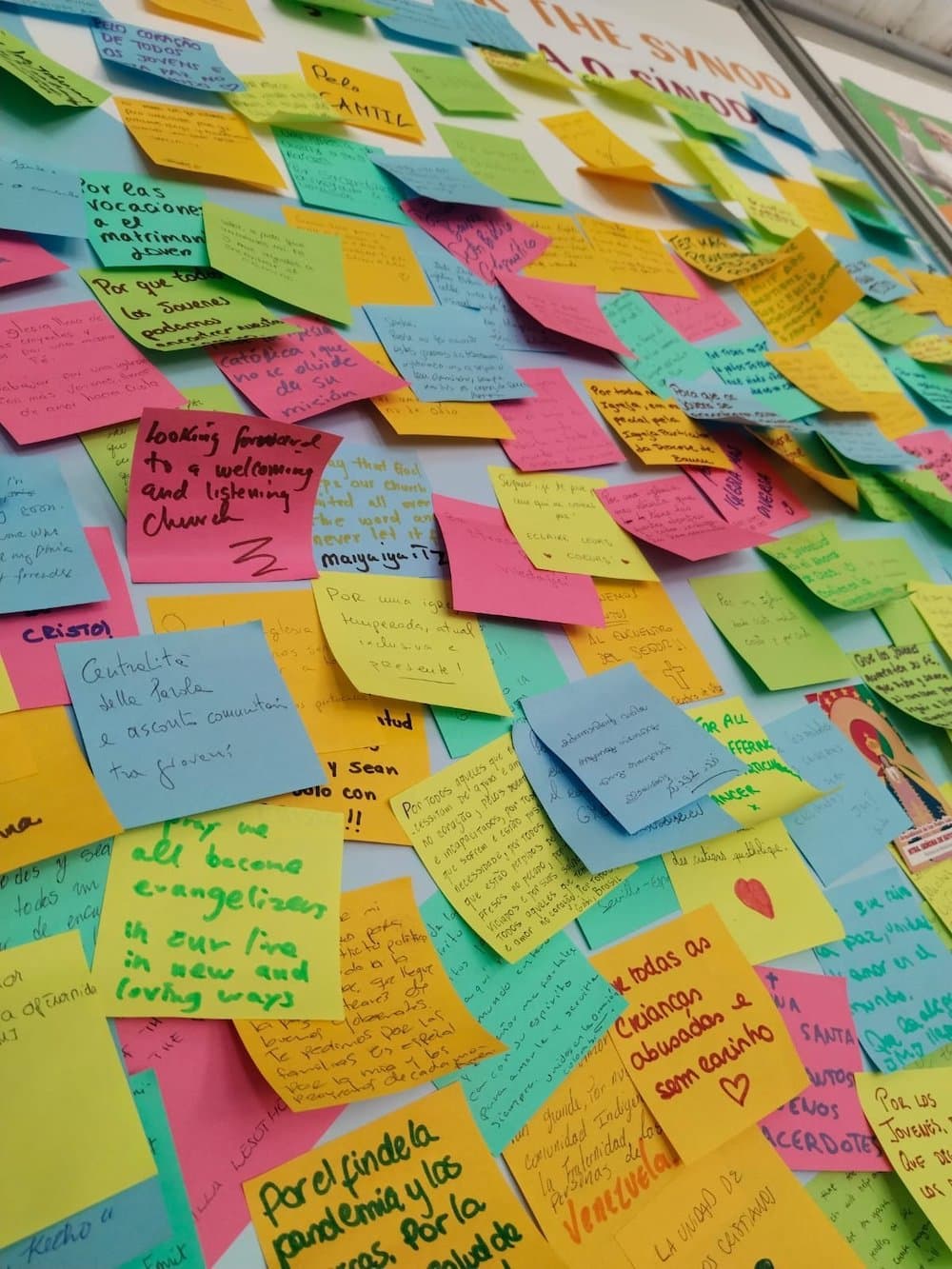
The current synod
But that brings us then to the current Synod of Bishops to be held in Rome in October. This synod has taken on extra importance because it is genuinely different from all previous synods in both subject matter and in its organization. Pope Francis has spoken of the need to complete the project of Vatican II and to truly empower the entire Church to take co-responsibility for her governance and life. This, then, is to be a synod about empowering a vaguely defined thing called “synodality” or a more “synodal Church.” And there will now be non-episcopal voting members at the synod — including lay voters — which calls into question how this can be a true Synod of Bishops. But Pope Francis insists that this is, somehow, the fulfillment of Vatican II’s call for a more collegial Church and is the crowning post-conciliar moment of a newly energized episcopacy. This, then, is to be the greatest synod of all — the synod on synods that will revolutionize how the Church is governed. But what does this really mean?
I am all for a more synodal Church, which is one where the teaching of Vatican II on the authority of the bishops is emphasized. But is this current “synodal way” really about empowering bishops, or is it about something else? I have labored to give a short history of what is at stake in the ongoing discussions about the relationship between episcopal and papal authority in order to make the following point: the current “synodal way” seems to have nothing to do with any of that. And, therefore, its claim to be the fulfillment of Vatican II’s teaching on episcopal authority is dubious. It thus represents a rather subtle but very real innovative invention of the current papacy that has little precedent in the tradition of episcopal synods in the Catholic Church. The debate at Vatican II, as we have seen, was about how to choreograph the authoritative interplay between episcopal and papal governance. But the current synod is about “listening and inclusion” as defining features of the Church’s apostolic structure. This is not, therefore, the completion of Vatican II but seems to be something else entirely.
I am all for a more synodal Church, which is one where the teaching of Vatican II on the authority of the bishops is emphasized. But is this current “synodal way” really about empowering bishops, or is it about something else?
And this new “synodal” invention is the creation of a consultative body — which is not a true Synod of Bishops — whose task it is to gather answers from poorly crafted questions that were answered by only a fraction of lay people and to call that “listening to the Holy Spirit via the People of God.” We see this in the working document that was released this year that will guide the synodal deliberations (called an Instrumentum Laboris). The document begins with the following statement: “The People of God have been on the move since Pope Francis convened the whole Church in synod in October 2021.” But how does one convene a synod of “the whole Church”? Is this even possible? Obviously, the document seeks to convey the image of a true gauging of the mood of the entirety of the Church via the medium of the so-called “listening sessions” mentioned earlier. But only about 1-2% of Catholics worldwide even bothered to participate in these sessions. Nor were the questions that were put to them developed according to the now well-developed scientific protocols for questions meant to have poll-taking accuracy. How then is this the “People of God on the move” and other such phrases?
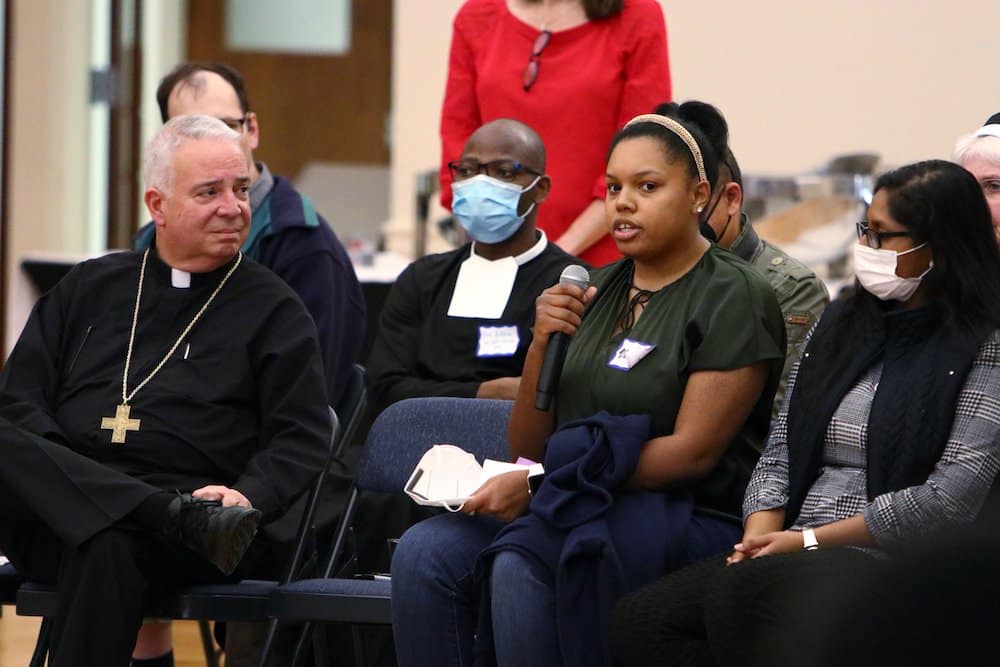
Is the pope mistaken?
The Instrumentum Laboris speaks little of conversion, repentance, holiness, Christ, the sacraments, sin and so on. However, it speaks a great deal about the need to develop a Church that “listens to everyone” and in which “everyone is included and welcomed.” And in a recent interview Pope Francis defined the meaning of “synodality” in precisely those terms: it means a Church where everyone is listened to, welcomed and included. He states:
“We have opened our doors; we have offered everyone the opportunity to participate; we have taken into account everyone’s needs and suggestions. We want to contribute together to build the Church where everyone feels at home, where no one is excluded. That word of the Gospel that is so important: everyone. Everyone, everyone: there are no first-, second-, or third-class Catholics, no. All together. Everyone. It is the Lord’s invitation.”
These are fine words and on their face thoroughly wonderful. But with all due respect to our Holy Father, who I think is sincere and is thoroughly orthodox despite loud voices to the contrary, I think he is mistaken. Why? Because the Church already includes everyone. That is, everyone willing to submit to at least attempting conversion and repentance. So is there something more there to which the pope is alluding that can give us a clue what all of this alleged “listening” is meant to engender? What kind of “inclusion” is the pope hinting at here? Because in my experience, the problem with the modern Catholic Church in Western culture is not that it is too rigoristic and moralistic and judgmental, but quite the opposite. Where is this pharisaical Church of finger-wagging moralizing fussbudgets that the pope seems to be alluding to here?
We can find a clue to the true goals of this synod, therefore, by looking at those prelates in the Church, promoted by Pope Francis, who have been making the most noise about what this synodal “listening and inclusion” are all about. For example, Cardinal McElroy of San Diego, in a now famous essay in America magazine (January 24, 2023) stated that based on the listening phase of the synod that the question of sexual moral theology needs a serious reexamination, with a special eye toward a greater inclusion of people in the LGBTQ community. He also said the synod will need to take a fresh look at women’s ordination. Also, Cardinal Jean-Claude Hollerich of Luxemburg, the “Relator General” of the upcoming synod, is on record as saying that the Church’s teaching on homosexuality is “wrong.” Full stop.
What seems to be the theological basis of all of this is an appeal to a kind of theology that emerged in the 20th century under the influence of the theologian Karl Rahner. I do not think Rahner would approve of the crass uses to which his theology of grace has been put, but in a nutshell, what many of his followers asserted was a belief that due to the universal presence of God’s grace in all souls, we must pay greater attention to how the Holy Spirit speaks to us outside of the usual means of Scripture, Tradition, the lives of the saints and the magisterium. We must pay more attention to this vague category called “experience” as a true location of the Holy Spirit speaking to us in a way that is equivalent, if not superior, to the traditional ways.
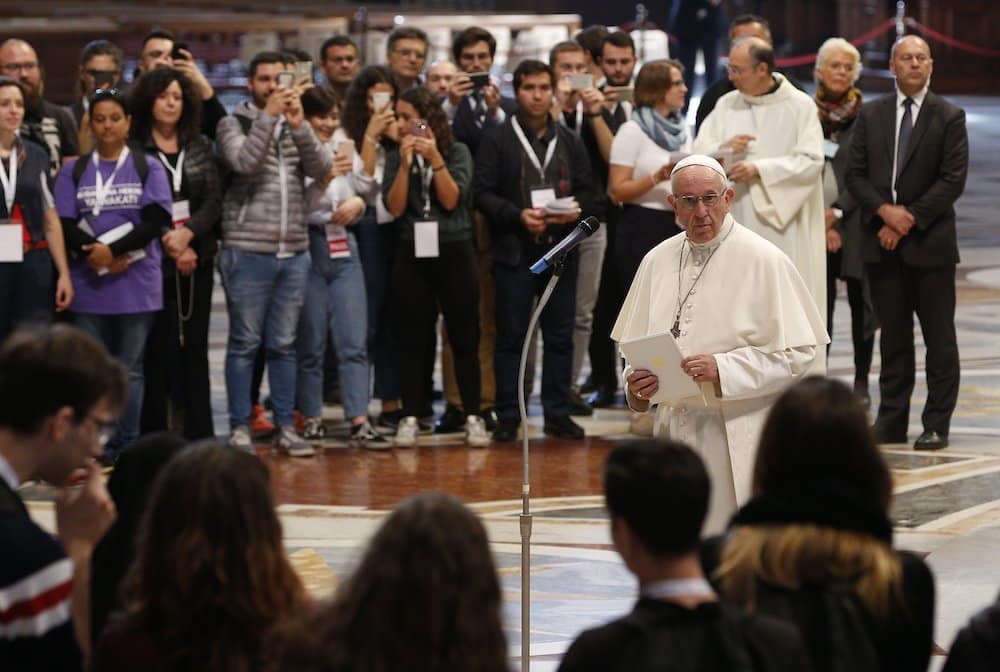
What is at stake at the synod
We see this in the Instrumentum Laboris, which speaks incessantly of the need to “listen” to how the “Holy Spirit” is speaking to the Church via the “People of God.” Nowhere does it speak of the need, as St. Paul says (1 Thes 5:21), to “test everything” in our experience in order to determine if it is indeed the voice of the Spirit within us or, perhaps instead, a less salutary spirit. Nowhere is it hinted that it is the proper role of the episcopacy to test all such thoughts to determine if they are more in tune with the prevailing cultural winds than the Gospel.
Instead, what we get is a notion of “listening” that remains simplistic and unproblematized as a complex process of discernment requiring episcopal oversight. Back in my youth, I was a seminarian. And I had a spiritual director. He did indeed “listen” to me. He then proceeded, gently and softly, but also most truly, to tell me that I was most often wrong about many things. That is what spiritual directors are for. Because the human capacity for self-rationalization and succumbing to shiny illusions knows almost no upward limit. And this is why we have a magisterium. Yes, the magisterium should listen to its flock. But after listening, it needs to teach and, if need be, to correct.
| Adsumus Sancte Spiritus |
|---|
|
We stand before You, Holy Spirit, This prayer has been historically used at councils, synods and other Church gatherings for hundreds of years. |
This is, therefore, what is at stake in the upcoming synod. It is to be a “listening” synod that takes into account the opinions of some of the laity on many issues. But there are powerful progressive forces at play in the Church and many of them are voting members of the synod. What is at stake, therefore, is the theology of “experience” that is at play at the synod and if a progressive take on that theology will not in fact be the theological principle around which the various “opinions” are curated in the final synodal document. Will we get more conflation of the “voice of the Holy Spirit” with the randomly expressed, filtered and curated, opinions of around 1-2% of the world’s Catholics? That is the key to look for.
Or will many of the bishops there actually treat the synod as a Synod of Bishops and assert their episcopal right to correct any and all attempts to change settled Church teachings? Pope Francis, to his great credit, has denounced the idea that the synod is to be a kind of super parliament where members will be voting on changing Church doctrine. And, ultimately, the final word will be his. And that is a consolation. Because despite my issues with the manner in which he has constructed this synod, he is the rock of Peter and my faith tells me that he will uphold the truths of that faith.

